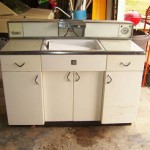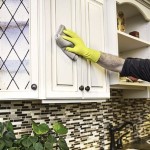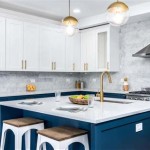Is Oak Good For Kitchen Cabinets? A Comprehensive Analysis
Oak has been a popular choice for kitchen cabinets for decades, and its enduring presence in the market speaks to its numerous advantageous qualities. However, determining whether oak is the "right" choice for a specific kitchen requires a thorough understanding of its properties, advantages, disadvantages, and how it compares to other materials. This article provides a detailed analysis of oak as a material for kitchen cabinetry, exploring its various facets to help inform decision-making.
Durability and Strength of Oak Cabinets
One of the primary reasons for oak's popularity is its exceptional durability. Oak is a hardwood, a classification that indicates a higher density and inherent resistance to wear and tear compared to softwoods like pine or fir. This density translates to a cabinet material that can withstand the daily rigors of a busy kitchen environment. Cabinets made from oak are less prone to dents, scratches, and other forms of damage resulting from regular use. The ability to withstand significant weight and pressure also makes oak suitable for supporting heavy countertops and storing bulky kitchen items.
The specific type of oak also influences its durability. Red oak and white oak are the two primary varieties used in cabinetry. White oak is generally considered slightly more durable and water-resistant than red oak due to its closed-grain structure. This closed-grain structure makes white oak less porous, reducing the likelihood of moisture absorption and subsequent warping or decay. Red oak, with its more open grain, may require a more robust sealant to achieve similar levels of moisture resistance.
Beyond the natural strength of the wood itself, the construction methods employed in crafting oak cabinets also contribute to their overall durability. Properly joined and reinforced cabinets, regardless of the material, will always outperform poorly constructed ones. However, oak's inherent strength allows for more robust joinery, further enhancing its longevity. Dovetail joints, mortise-and-tenon joints, and other strong joinery techniques are commonly used in quality oak cabinet construction.
The finish applied to oak cabinets also plays a critical role in their long-term durability. A high-quality finish, whether it's a varnish, lacquer, or polyurethane, protects the wood from moisture, stains, and UV damage. Regular maintenance, including cleaning and occasional refinishing, can significantly extend the lifespan of oak cabinets, ensuring they remain functional and aesthetically pleasing for many years.
Aesthetic Qualities and Design Versatility of Oak
Oak's distinctive grain pattern is a major factor in its aesthetic appeal. The prominent grain gives oak cabinets a visual texture and character that is often desired in traditional and rustic kitchen designs. The grain pattern can range from relatively straight to highly figured, offering a range of aesthetic options. This natural variation ensures that each oak cabinet is unique, adding to the overall character of the kitchen.
While oak is often associated with traditional styles, it can also be incorporated into more contemporary designs. The key to achieving a modern look with oak lies in the finish and the style of the cabinet doors. Lighter, more neutral stains can minimize the prominence of the grain, creating a cleaner, more streamlined appearance. Slab-front doors or simple Shaker-style doors can further enhance the contemporary feel.
Oak's versatility also extends to its ability to be stained in a wide range of colors. While natural oak has a warm, golden hue, it can be stained to achieve darker browns, grays, or even painted in various shades. This ability to customize the color allows oak cabinets to be integrated into a variety of color schemes and design styles. However, it's important to note that the grain pattern will still be visible through most stains, which may or may not be desirable depending on the desired aesthetic.
The choice between red oak and white oak also influences the aesthetic of the cabinets. Red oak has a slightly pinkish tint, while white oak has a more neutral, grayish-brown tone. This subtle difference can affect the overall warmth or coolness of the kitchen. Consider the existing color palette of the kitchen and the desired mood when selecting between red oak and white oak.
Furthermore, the texture of oak can be manipulated to create different visual effects. Wire brushing or distressing techniques can enhance the grain pattern and create a more rustic, aged appearance. Conversely, a smooth, polished finish can create a more refined and elegant look. These techniques allow for further customization and personalization of oak cabinets.
Cost Considerations and Maintenance Requirements
The cost of oak cabinets typically falls within the mid-range of cabinet materials. It is generally more expensive than laminate or thermofoil cabinets but less expensive than high-end hardwoods like cherry or walnut. The specific cost will vary depending on the grade of oak, the complexity of the cabinet design, and the manufacturer. Factory-built cabinets tend to be less expensive than custom-built cabinets, regardless of the material.
When evaluating the cost of oak cabinets, it's important to consider their longevity. Due to their inherent durability, oak cabinets are likely to last longer than cabinets made from less durable materials. This extended lifespan can offset the initial cost difference in the long run. A well-maintained set of oak cabinets can easily last for several decades, making them a worthwhile investment.
The maintenance requirements for oak cabinets are relatively straightforward. Regular cleaning with a mild soap and water solution is typically sufficient to remove dirt and grime. Avoid using harsh chemicals or abrasive cleaners, as these can damage the finish. Periodic waxing or polishing can help protect the finish and maintain its luster. Scratches and minor damage can often be repaired with touch-up kits that are readily available.
Moisture is the primary enemy of wood cabinets, including oak. It's crucial to address any leaks or spills promptly to prevent water damage. Ensure that the area around the sink and dishwasher is properly sealed to prevent water from seeping into the cabinets. Proper ventilation in the kitchen can also help reduce humidity levels and minimize the risk of moisture damage.
Refinishing oak cabinets is a viable option for updating their appearance or repairing more significant damage. This process involves sanding down the existing finish, applying a new stain or paint, and then sealing the wood with a protective topcoat. Refinishing can be a cost-effective way to refresh the look of oak cabinets without replacing them entirely. However, it is a time-consuming and labor-intensive process that may be best left to professionals.
In summary, while the initial price point of oak cabinets may be higher than some alternative materials, their durability, aesthetic versatility, and relatively simple maintenance requirements contribute to their long-term value proposition. Careful consideration of the specific type of oak, the chosen finish, and the overall design aesthetic will contribute to the successful integration of oak into any kitchen remodel or new construction project.

How To Make Oak Kitchen Cabinets Look Modern An Overview

Why Are Oak Kitchen Cabinets Perfect For Every Style

7 Reasons To Choose Oak Kitchen Cabinets For Your Renovations

How To Make Oak Kitchen Cabinets Look Modern Without Covering Them Up

Oak Kitchen Cabinets All You Need To Know

Is Oak A Good Wood For Kitchen Cabinets

Top 20 Kitchen Countertop Ideas With Oak Cabinets Marble Systems

Benefits Of Installing Mid Century Oak Kitchen Cabinets In Your Home

Oak Kitchen Cabinets All You Need To Know

Hickory Cabinets Vs Oak Kitchen Which Is Better
Related Posts








